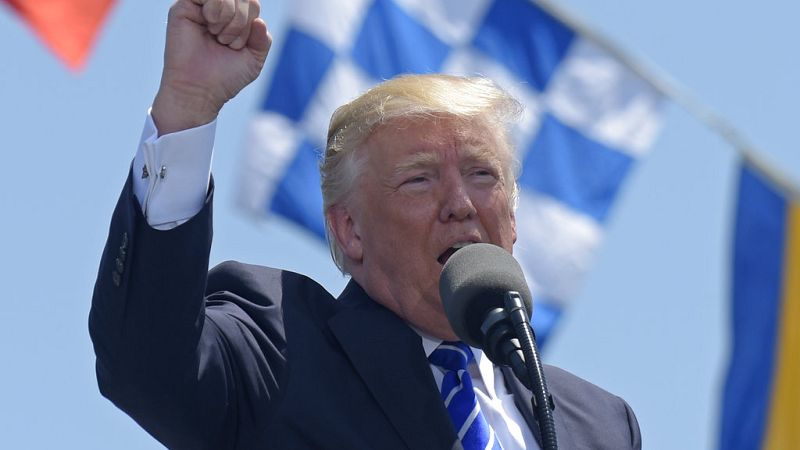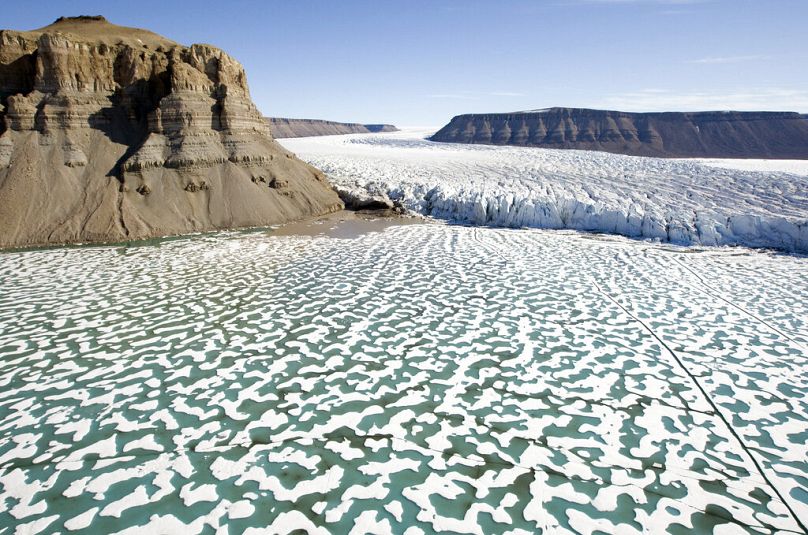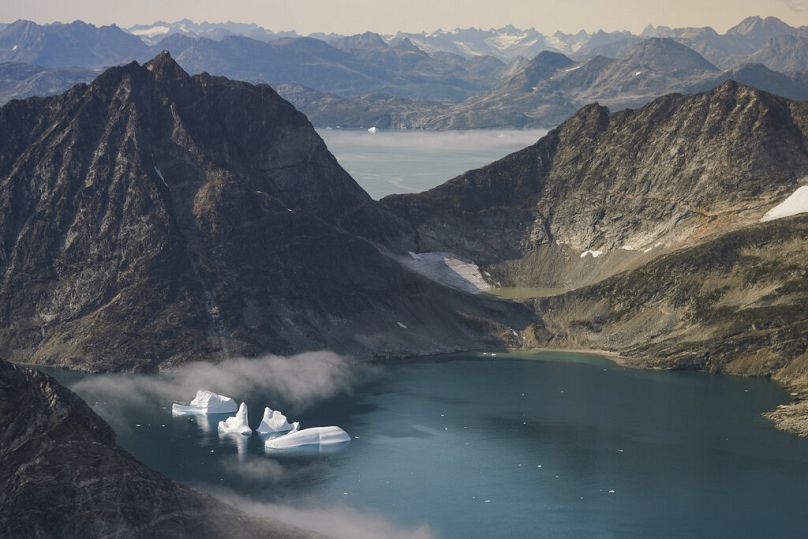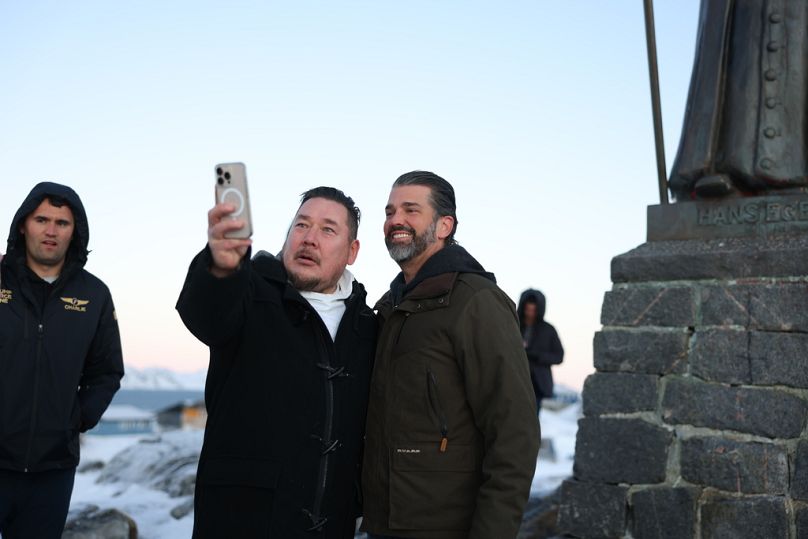‘We don’t want to be Americans’: Trump’s bid to buy Greenland does not sit well with Greenlanders

US President-elect Donald Trump has begun ruffling feathers in Europe even before he is sworn in.
In December, Trump posted on his social media platform Truth Social that, "For purposes of National Security and Freedom throughout the World, the United States of America feels that the ownership and control of Greenland is an absolute necessity."
“Greenland is an incredible place,” he said in another post. “The people will benefit tremendously if, and when, it becomes part of our Nation. We will protect it, cherish it, from a very vicious outside World. MAKE GREENLAND GREAT AGAIN!”
Since then, Republican lawmakers have introduced a bill to the House of Representatives that would allow Trump to start negotiations to buy Greenland at 12:01 PM (EST) on 20 January. The bill, rather provocatively, is called the Make Greenland Great Again Act.
Trump’s interest in Greenland is nothing new. In 2019, during his last presidency, he indicated a desire to purchase the island. In response, the Danish prime minister Mette Frederiksen called it ‘absurd,’ forcing Trump to abruptly cancel a planned trip to the island.
But he isn’t the only one eyeing up Greenland and climate change is making the world’s biggest island all the more appealing to other nations. Melting Arctic ice is opening up new shipping routes and making it easier to mine rare metals essential to the green transition.
“Greenland is not for sale. Greenland is not Danish. Greenland belongs to Greenland. I strongly hope that this is not meant seriously,” Frederiksen told newspaper Sermitsiaq. “It’s an absurd discussion, and [Greenland Premier] Kim Kielsen has of course made it clear that Greenland is not for sale. That’s where the conversation ends.”
This message has been repeated by Frederiksen this time around too. In a 45-minute call to the president-elect on Wednesday, she reiterated that it is up to Greenland to decide its own future, although it seems the discussion is not yet concluded.
Why does everyone want Greenland?
Trump is not the only one taking another look at what Greenland has to offer. As warming temperatures melt Arctic ice, a new route from northern Europe to Asia is revealed, one which is much shorter than the Suez Canal route.
In response to this, China has been eyeing Greenland, stating in 2018 that it wanted to create a ‘Polar Silk Road’ by building infrastructure in the Arctic. Later that year, a Chinese company bid to refurbish three airports in Greenland, although ultimately Greenland chose Denmark as its partner.
Australian mining firms have also attempted to get their hands on the country’s natural resources. Energy Transition Minerals (ETM) applied to mine rare earth minerals in the south of the island in 2018.
Citing environmental concerns, the Greenland government refused to give the firm a mining license and is now locked in a legal dispute over the issue. The mining firm is seeking €11 billion in compensation or a right to mine, which both Greenland and Denmark have rejected.
The changing environment in Greenland means ice cover is less widespread and for a shorter period of the year. For mining companies, Greenland's ice retreat could facilitate the start of a mineral ‘gold rush.’
Beneath its rocky surface, Greenland is sitting on some of the world’s largest untapped reserves of rare earth elements (REE), from uranium to nickel, titanium and gold. In all, 25 of 34 minerals deemed "critical raw materials" by the European Commission were found in Greenland. Many are essential for clean energy and electrification therefore vital to accelerating the green transition.
Exploiting Greenland’s resources won’t be easy
Kvanefjeld, in the south of the island, has one of the largest uranium deposits and the third-largest REE deposits in the world. Nearby Kringlerne probably has the biggest deposit of REE in the world.
“We think that the American focus is more on Kringlerne,” says Niels Henrik Hooge, spokesperson for NOAH Friends of the Earth Denmark. “We are trying to stop the project because it will harm the environment just as much as Kvanefjeld.”
But Hooge also points out that a Trump takeover of Greenland is unlikely to have a significant impact on mining.
“The problem for the mining sector is not the environmental laws as much as the high cost due to the Arctic climate and Greenland’s lack of infrastructure,” he explains. “Compared to other mineral-rich regions of the world, it would still cost too much to mine in Greenland.”
Getting mining permits in Greenland isn’t easy, and the cost of setting up a mine in the freezing Arctic conditions can run into billions.
“The country has robust legislation in the field of raw materials,” says Bodil Karlshøj, Executive director of Transparency Greenland. “Foreign companies in the mining industry are not new, but the most important thing is that everyone is treated equally and according to the law when permits are sought for preliminary investigations and investigations.”
Trump also intends to exploit Greenland’s enormous, mostly off-shore oil and gas resources,” adds Hooge. “This might pose similar problems: when Greenland’s government banned oil and gas extraction a couple of years ago, they kicked in an open door, because there had so far been no commercial interest.”
While Trump’s desire to own Greenland may be more vanity-motivated than the natural resources alone, there are concerns it could have far-reaching environmental consequences.
“If Greenland is more aligned with the USA under a Trump administration, in our opinion, all environmental legislation in Greenland could be weakened, if not repealed,” warns Niels Henrik Hooge.
Do Greenlanders want to be American?
Greenland’s Foreign and Security Policy Opinion Poll offers insight into the opinions of the country’s citizens. The 2024 edition shows NATO, the EU and an Arctic axis of neighbouring countries were identified as the people’s preferred partners.
For the USA, 59 per cent of Greenlanders said they wanted more cooperation, down from 69 per cent in 2021. 23.5 per cent wanted less cooperation, up from 18 per cent in the previous survey.
In comparison, Iceland, Canada and the Arctic Council were picked by 80 per cent of citizens as places they’d like to see closer cooperation with.
“We don’t want to be Americans,” Greenland’s Prime Minister Múte Egede told Fox News on Friday, “We don’t want to be a part of the US, but we want strong cooperation together with the US.”
“I believe it’s both useful and interesting for Greenland to establish strong connections with many countries including the USA,” says Maliina Abelsen, former finance minister and business consultant in Greenland. “However, this does not mean I suggest we should be part of the USA at all.”
Those who witnessed Trump Jr’s visit to Nuuk last week might believe that, on the ground, Greenlanders do support US intervention.
Trump’s son took lunch at the Hotel Hans Egede, where he was joined by numerous Greenlandic people wearing MAGA hats and appearing to support the Trump mission.
However, reporting in the Guardian on Friday suggests these were not exactly willing volunteers. CEO of the hotel, Jørgen Bay-Kastrup, told reporters that Trump’s team had invited them in off the street for lunch, with many described as being homeless.
“That of course was a little bit strange to us,” Bay-Kastrup told the Guardian, “because we saw guests that we have never seen in our hotel before – and will probably never see again because it’s out of their economical means.”
But for some sectors of Greenlandic society, closer links with the USA are welcomed. Visit Greenland, the island’s tourism body, is placing a strong focus on attracting more Americans to the destination.
“From a tourism perspective, the United States is a significant market for Greenland,” says Anne Nivíka Grødem, CEO of Visit Greenland.
“One example of this growing interest is United Airlines’ decision to establish a direct route between New York and Nuuk. The route provides a valuable connection, making it easier for American travellers to explore and experience Greenland.”
Do Greenlanders want independence from Denmark?
Prime Minister Múte Egede has frequently touted independence from Denmark as one of his goals. In his New Year’s address in early January, he called for removing the ‘shackles’ of colonialism and hinted at a referendum in 2025.
When asked if Greenlanders would vote for their independence, Egede replied, “It’s up to the Greenlandic people to decide when we want to be independent, and I think it’s important to see that if Greenland takes those steps, we will always be a part of the Western alliance and a strong partner for the US, because your security is our security.”
Egede added that Greenlanders want to be neither Danes nor Americans, but “part of the Western alliance as Greenlandic people.”
“If we want to be heard and taken seriously, we must avoid trading one form of colonial chains for another,” stresses Maliina Abelsen. “It is critical that we are not blinded by money or short-term opportunities but instead seize this moment to engage in an honest and constructive dialogue with Denmark.”
“Of course, independence is the goal. Who wouldn’t want to be ‘master of their own house’?” Abelsen concludes. “But at the same time, we must give ourselves the space for an open and thorough public debate. There are questions we must answer for ourselves within our country that should not be dictated by offers from abroad.”
But is independence a realistic prospect in the current climate? “It’s not realistic now economically,” says Abelsen, “but by establishing more trade and connections with other countries, we will create a more robust economy.”




